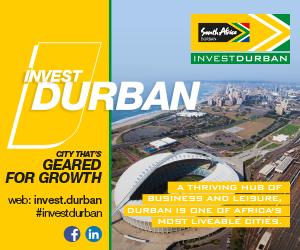
The Premier of the Northern Cape, Dr Zamani Saul, chose to discuss the 100 MW Redstone concentrated solar thermal power (CSP) plant as the first item in his State of the Province Address in February 2022.
He had visited the Postmasburg facility on his way to Upington to give the speech and shared with his audience some of the impact which the project, and by extension, the national Renewable Energy Independent Power Producer Procurement Programme (REIPPPP) under which it falls, is having on the Northern Cape.
Four of the 11 Renewable Energy Development Zones (REDZs) planned for South Africa are located in the Northern Cape.
Saul noted that the project had created 636 direct jobs on site, 91% of which are filled by South Africans. Specifically, 339 of the jobs are filled by people from the Tsantsabane and Kgatelopele municipalities, 45% of employees are young people under the age of 35 and 15% of all employees are women. By the end of 2022, nearly 1 800 people will be employed. The project expects to reach full commercial operation by the end of October 2023. The Redstone project has also created employment and procurement opportunities for 104 suppliers and subcontractors from those municipal areas and a further 26 SMMEs with majority-black ownership.
The 100 MW Redstone plant is the first project-financed CSP with molten salt central receiver project in the world and one of the largest investments in South Africa under the REIPPPP, with an estimated investment value of $800-million. Saudi Arabian electricity group ACWA Power also runs the 50 MW Bokpoort CSP plant near Groblershoop.
When the winning bids of latest phase of the REIPPPP were announced in March 2021, the Northern Cape was allocated 450 MW in approved bids. In less than a decade, an entirely new sector has been created through legislation that invited local and foreign investors to bid for and then build renewable energy generation plants. South Africa’s National Development Plan (NDP) requires 20 000 MW of renewable energy by 2030.
Green hydrogen is the newest energy subsector.
With the province already established as a clear leader in terms of solar projects, and with large numbers of wind farms also under construction, it was noteworthy that Premier Saul announced in his SOPA that the Northern Cape Province, in collaboration with Infrastructure South Africa, has developed a Provincial Hydrogen Strategy. This strategy was approved in 2021.
In a similar way in which each of the province’s Special Economic Zones (SEZs) and industrial parks is being aligned with renewable energy in some way (either generation or manufacturing), the Boegoebaai Port and Rail Development project has now been expanded to include the adjacent Hydrogen SEZ. The Boegoebaai Port and Green Hydrogen Cluster is regarded as a key priority programme, coordinated by the Northern Cape Economic Development Agency (NCEDA) and Infrastructure South Africa.
Four of the 11 Renewable Energy Development Zones (REDZs) planned for South Africa are located in the Northern Cape. REDZs will encourage localisation through the development of manufacturing hubs that can make components for the sector. The Special Economic Zones (SEZs) being phased in across the Northern Cape will complement this trend. REDZs are being developed in support of the implementation of the national Integrated Resource Plan (IRP 2019).
One of the Strategic Transmission Corridors identified at national level, the Northern Corridor, begins at Springbok in the west and runs through Upington and Vryburg on the way to Johannesburg in Gauteng. Each of those towns will be the focus of an REDZ, with the other REDZ in the province located in the provincial capital of Kimberley.
To assist investors, a One Stop Shop has been launched in the Northern Cape. Invest SA, through the Department of Trade, Industry and Competition (dtic), will provide investing companies with advice and services to fast-track projects and reduce red tape.
Solar power
Approximately 60% of the projects so far allocated have been in the nation’s sunniest province. Projects such as Kathu Solar Park, a concentrated solar power project, and the Roggeveld Wind Farm are indicative of the large scale of most of the energy generation that is being rolled out.
Xina Solar One is located at Pofadder on the N14 between Upington and Springbok. The R9.4-billion project is a joint venture between Spanish energy firm Abengoa Solar, the Industrial Development Corporation (IDC), the Public Investment Corporation (PIC) and a community trust representing the local population.
Kaxu Solar One is also near Pofadder but Khi Solar One is closer to Upington. All three plants use concentrated solar power which reflects the sun’s rays during the day into a molten salt storage system. The energy is then slowly released during the night. The 205 meter tower that collects the rays at the Khi Solar One site is one of the tallest structures in South Africa.
The Northern Cape is the natural home for the generation of solar power. Long-term annual direct normal irradiance (DNI) at Upington is 2 816 kWh/m², according to a survey done for Stellenbosch University by Slovakian company GeoModal Solar.
South Africa’s national average is among the best in the world. Stellenbosch University’s Solar Thermal Energy Research Group has six sites monitoring irradiation levels.








